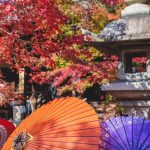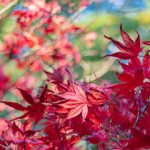Bloodgood Japanese Maple: Unveiling the Allure of a Timeless Beauty
Bloodgood Japanese Maple
The Bloodgood Japanese Maple (Acer palmatum ‘Bloodgood’) is a beloved and iconic tree that captivates with its stunning foliage and graceful form. In this blog post, we will explore the enchanting characteristics of the Bloodgood Japanese Maple, delve into its cultural significance, discuss its visual impact in different garden settings, and provide tips for its cultivation and care. Whether you’re considering adding a Bloodgood Japanese Maple to your landscape or simply want to appreciate its timeless beauty, read on to uncover the allure of this remarkable tree.
The Beauty of the Bloodgood Japanese Maple:

The Bloodgood Japanese Maple is renowned for its dramatic and vibrant foliage. Its leaves emerge deep burgundy-red in spring, transitioning to a rich and dark red-purple during summer, and finally turning a brilliant crimson in fall. The palmate leaves are deeply lobed, adding an elegant and delicate texture to the tree’s overall appearance. Even during winter, the tree’s architectural structure remains captivating, with its gracefully spreading branches creating an exquisite silhouette against the sky.
Cultural Significance:

The Bloodgood Japanese Maple holds a significant place in Japanese culture and horticulture. Japanese maples, in general, are revered for their beauty and symbolism. They are often associated with tranquility, balance, and the changing seasons. In Japanese gardens, the Bloodgood Japanese Maple is frequently used to create a sense of harmony and provide a focal point of interest. Its striking foliage and graceful form evoke a sense of tranquility and captivate the viewer’s attention.
Visual Impact in Garden Settings:

The Bloodgood Japanese Maple is a versatile tree that can be integrated into various garden styles and settings. Its compact size, reaching about 15 to 20 feet (4.5 to 6 meters) in height and spread, makes it suitable for both small and large gardens. It can be used as a standalone specimen tree to create a focal point, or planted in groups for a striking display of contrasting foliage colors. The Bloodgood Japanese Maple also complements other plants, such as evergreen shrubs or perennials, providing a harmonious blend of textures and colors.
Cultivation and Care:

To ensure the healthy growth of a Bloodgood Japanese Maple, it is important to provide it with the right conditions. It thrives in partial shade to full sun, although it benefits from some protection from intense afternoon sun in hotter climates. The soil should be well-draining and enriched with organic matter. Proper watering is crucial, especially during the tree’s establishment phase, as it prefers consistently moist soil. Applying a layer of mulch around the tree helps conserve moisture and regulate soil temperature.
Pruning requirements for the Bloodgood Japanese Maple are minimal. However, occasional pruning can be done to remove any dead or crossing branches and maintain its desired shape. Pruning is best done during late winter or early spring before new growth emerges. The tree is generally low-maintenance, but monitoring for pests and diseases, such as aphids or fungal infections, is essential. Prompt action and appropriate treatments, if necessary, will help keep the tree healthy and vibrant.
Conclusion
The Bloodgood Japanese Maple stands as a timeless beauty, enchanting garden enthusiasts with its striking foliage, graceful form, and cultural significance. Whether as a focal point or part of a harmonious landscape composition, this remarkable tree adds depth, color, and tranquility to any garden setting. By providing the right growing conditions and minimal care, you can enjoy the enduring beauty of the Bloodgood Japanese Maple in your outdoor space, connecting with nature and embracing the essence of Japanese horticulture.
